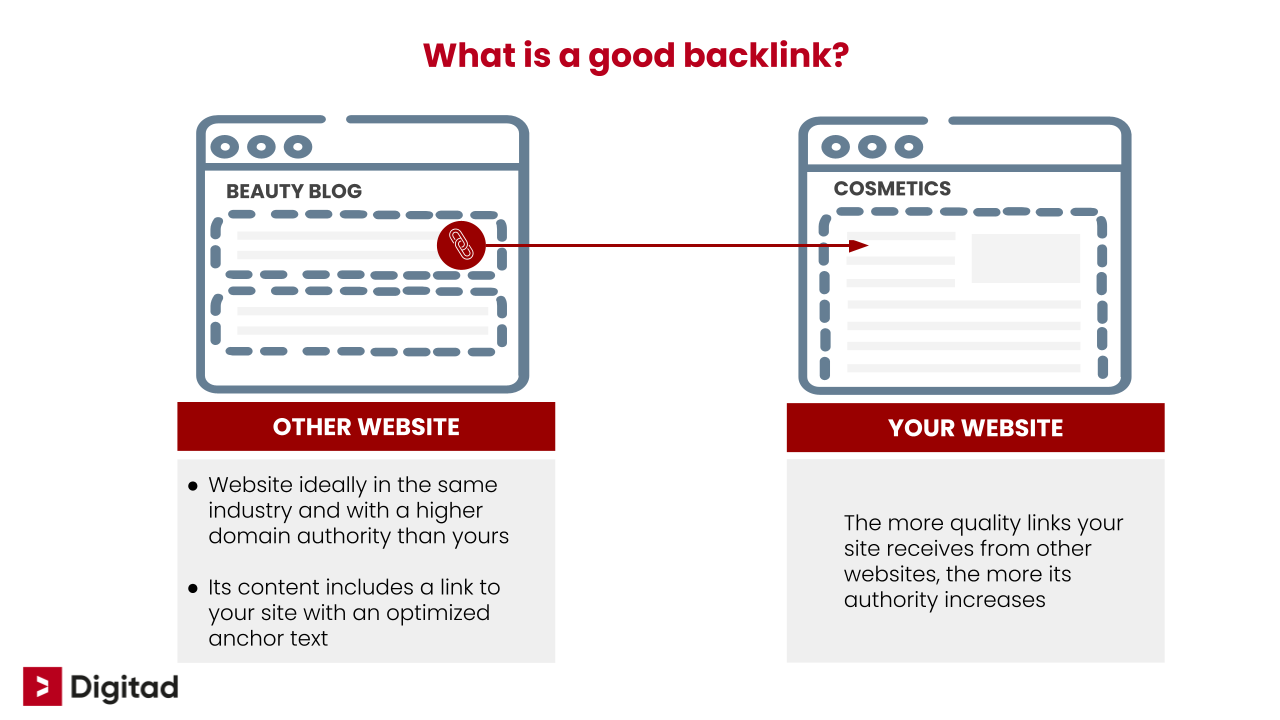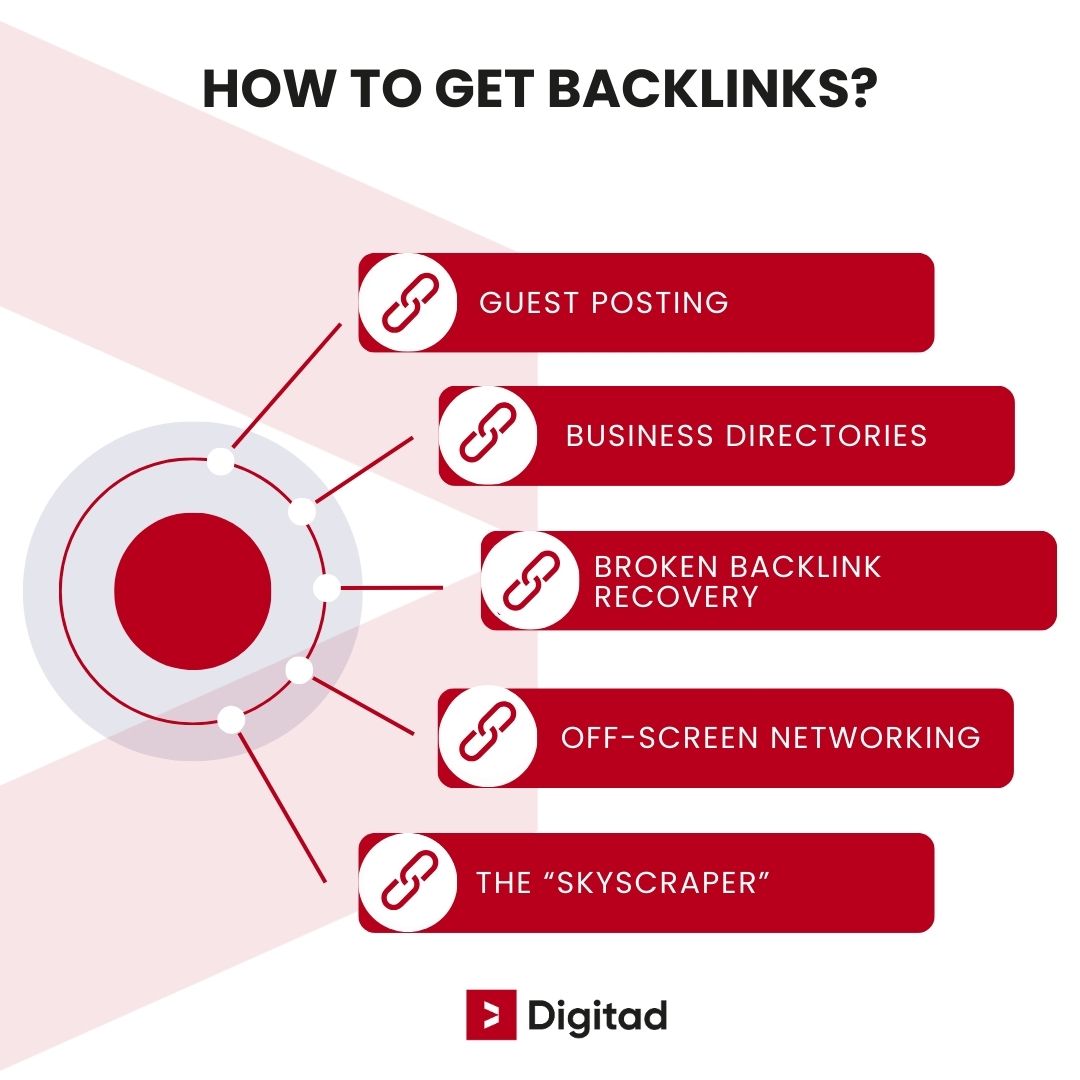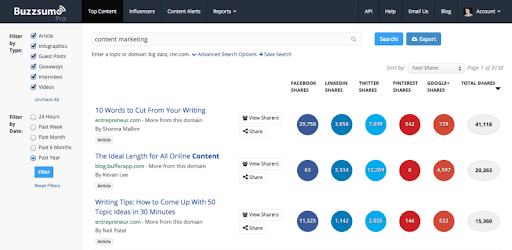Sommaire
- What is a backlink?
- Why is acquiring high-quality backlinks so important?
- What is a quality backlink according to Google?
- What is a backlink profile?
- How to get backlinks to my website?
- 1) Guest posting
- 2) Business directories and local listings
- 3) Broken backlink recovery
- 1. Identify companies whose websites have recently changed or disappeared
- 2. Find websites still pointing to outdated URLs
- 3. Identify dead links that are compatible with your content
- 4. Finally, contact the websites that still contain the broken links
- In short, what is the Moving Man Method to get backlinks?
- 4) Off-screen networking
- 5) The “skyscraper”
- The right tools and engaging content
Does your website have a good reputation with Google?
If we ask this question, it’s because your website’s reputation is a major ranking factor for search engines. This reputation, which is also referred to as your authority, is strongly influenced by the external links that point to your website (backlinks).
Why is this?
For Google, if your website is mentioned elsewhere by users on the web and receives links, it means that it has a “good reputation” and is trustworthy. The more Google trusts your website and its content, the higher it will rank it.
But how to get backlinks? That’s the question our SEO experts will try to outline today.
In this comprehensive guide, we will cover the following questions:
- What is a good backlink?
- Which strategies work best for backlinks building?
- How do I get backlinks to my website?
- How to set them up?
Before we go any further in this guide, let’s quickly go back to the basics.
What is a backlink?
In digital marketing, a backlink is a link from an external website that points to your website. For instance, a directory listing your company and linking to your homepage is a backlink.
Why is acquiring high-quality backlinks so important?
Every backlink boosts your site’s domain authority (or domain rating)- essentially, its reputation and credibility in Google’s eyes. Search engines consider domain authority as one of the most crucial factors when ranking websites in search results.
Backlinks, therefore, play a major and direct role if you want to rank first on Google. Building backlinks is a key part of a successful SEO strategy (search engine optimization).
It can even bring you high quality traffic if you get backlinks from the right websites 😉.
However, it’s essential that these backlinks are of high quality, as not all backlinks carry equal weight.
What is a quality backlink according to Google?
The quality of your inbound links depends on several criteria. In short, quality backlinks are:
- Relevant: they originated from content logically related to your website
- Have a good domain authority: they come from sites that Google perceives and ranks well
- Are diverse: coming from various sources like blogs, directories, and the press
- Utilize appropriate anchor text: ensuring consistency and variety
Backlink, domain authority, quality: the basics are clear to please search engine algorithms.
Let’s move on to the article’s main point: how to get backlinks for your website!
What is a backlink profile?
A backlink profile refers to the collection of all the backlinks pointing to a particular website. It includes information about the quantity, quality, diversity, and relevance of these backlinks.
Analyzing a backlink profile helps website owners and SEO professionals understand how well their site is connected to the broader web and how search engines might perceive its authority and credibility based on the links it has earned from other sites.
A healthy backlink profile typically consists of a diverse range of high-quality, relevant links from reputable sources.
How to get backlinks to my website?
Several methods exist to gather backlinks, such as:
- Guest posting
- Registration in online directories (online business directories, etc.)
- Inbound link exchange
- Transformation of mentions without links into backlinks
- Interviews and testimonials
- Discussion forums
- Press releases
- Online contests
- Social networks
We highlight five particularly potent strategies:
1) Guest posting
Guest posting is one of the most common ways to generate backlinks.
Here’s the concept: you create a post for a third-party blog and include a link to your website. It’s essentially a trade. You offer someone a blog post and get a backlink in return.
Incorporate your link smoothly into the content or feature it in your guest bio or introduction.
SEMRush’s Link Building Tool can identify relevant guest post opportunities on industry-related websites, allowing you to prioritize potential sites based on the value and ease of obtaining a link.
2) Business directories and local listings
Business directories and local listings compile information about businesses within a certain market or geographic location. They allow businesses to add their contact information, including a link to their website.
These links are not always dofollow, (a dofollow link means that Googlebots “follow” the content and domain authority is properly transferred). But nofollow links still send quality signals to Google and have a positive impact on your local SEO.
In a few clicks, SEMRush’s listing management tool lists the various local directories and listing platforms in your area.
3) Broken backlink recovery
Patience and hard work are the foundation, but there’s more: getting backlinks also requires a touch of flair and opportunism.
On the Internet, every minute, new websites are born and others disappear. And this happens in your industry more frequently than you might think. Sometimes, some companies shut down or change their name.
Result? All the backlinks that pointed to their old website now point to non-existent URLs or 404 pages. A great opportunity to get backlinks! This method is referred to as the “Moving Man Method”.
Here is how to increase the number of backlinks on your website with the “Moving Man Method”:
1. Identify companies whose websites have recently changed or disappeared
In this preliminary step, focus on companies that have recently:
- Shut down
- Changed their name
- Migrated to a new URL
- Stopped offering a service/product
2. Find websites still pointing to outdated URLs
So, you have in mind a company in your industry that has been affected by one of the changes in point 1. Now it’s time to find websites with broken links or (outbound links). You’re basically looking for any website that had links pointing to that website that just shut down or changed. Now that these URLs are inaccessible, the links are broken.
To do this, go back to that old URL, and use a backlink-checking tool like Ahrefs, BuzzSumo or MajesticSEO. You can also find many free tools on Google.
3. Identify dead links that are compatible with your content
At this stage, if possible, focus on websites with good domain authority scores.
Make sure you only consider URLs of pages that cover essentially the same topic as the pages you are trying to get backlinks for.
Also, make sure that these old URLs are from reliable websites that Google did not penalize for bad SEO practices.
4. Finally, contact the websites that still contain the broken links
The last step is to contact the websites that still contain the outdated links that you want to replace. Remember, you’re in fact doing the website owner a favor. You give them the opportunity to replace a dead link with an updated relevant link that points to quality blog content. Great news for their SEO.
To contact them you can email them or fill up their contact form online.
You know how to take those backlink opportunities at your advantage. Lots of backlinks are not that far away, you just need to email the right person.
In short, what is the Moving Man Method to get backlinks?
Let’s give an example that covers the whole method:
- A company that sells raspberries, Raspberry Inc., has a website: raspberry.com
- Raspberry.com has backlinks from a variety of websites. In other words, many websites have links pointing to raspberry.com
- At some point, Raspberry Inc. shuts down, and their website is taken offline
- All websites pointing to raspberry.com now have broken links, links that don’t redirect to anything
- Now YOU enter the stage, spotting sites with broken links. You evaluate if some links pointing to YOUR website could be relevant substitutes for some of these broken links.For example, website X has a link pointing to an article that no longer exists, on raspberry cake recipes. If your website also has an article on raspberry cake recipes, it could be a great substitute.
- Contact these website owners and offer to replace their broken links with links to your website, which turns out to be very profitable for all parties involved.
4) Off-screen networking
As we know, guest blogging is one of the best way to get quality backlinks fairly quickly. This practice involves engaging with authors and bloggers to establish mutually beneficial inbound link creation and exchange.
These backlinks strengthen your reputation on the Internet and your visibility on Google, that’s great. Great link building opportunities.
But can you do even better?
Yes.
If you want your company’s good reputation to reach the widest possible audience, you can adopt a link building strategy that extends beyond the online realm.
But where to get backlinks, if not online? Position yourself as an expert in your industry, meet with your customers, and interact with all the important players in your industry. The mentions and backlinks will soon come your way. Here are the actions you can take:
- Host industry-related events
- Attend networking events
- Give presentations on popular industry topics
- Arrange interviews with experts in your field
- Participate in online forums or discussion groups
- Write reports or articles about industry events
Let’s take a tangible example:
Our CEO Alexandre gave a talk for a digital marketing training center. It caught the attention of authors and editors from the digital marketing industry, who then published an article featuring a high quality link to our website.
Of course, if your goal is only to get backlinks, preparing a talk might not be the most effective link building method. It will take more effort and a longer period of time than listing your company in a good online directory.
But initiatives such as giving talks go beyond link building efforts. They also improve your company’s credibility and visibility. You kill two birds with one stone.
5) The “skyscraper”
This technique comes from Backlinko. Although it can be time-consuming, this approach includes several key elements of a strong backlink building strategy.
Here’s how to get high-authority links with the skyscraper technique:
1. Identify the most popular content in your industry
Start by identifying the types of content that your competitors are producing that are most popular and widely shared in your industry. For this, you can use tools such as Ahrefs, BuzzSumo or Majestic SEO. Otherwise, you can simply do Google searches and find out which content ranks best for each search query.
Here is the BuzzSumo interface. Even the free version shows you the number of shares on social media:
The paid version gives you access to information about the number of incoming links for each article, as well as their sources.
2. Produce even better content
If you want to get closer to Google’s first position for a given keyword, you will have to do better than your competitors. By that, we mean produce better content pieces than they do.
That is to say, in-depth content that is longer, more detailed, more thorough, with more images, and more external sources.
For example, if you’ve identified that the two most shared articles on the topic you’re targeting are “The 15 best tools to increase …” and “The 20 new tools to improve …“, then all you need to do is produce “The complete list of 50 tools to …“. Long form guides can be a good solution if you want to overtake your competitors.
If you need some tips about content writing, we got a full guide.
3. Promote your new content to the right people
Targeting the right audience
Having created the most valuable content in your industry on a specific topic, the next vital step is to ensure it reaches the right audience. These are the authoritative websites potentially interested in linking to your content.
Recall the articles identified in the first point? They have already attracted backlinks. Utilizing the skyscraper technique’s final stage, your goal is to divert these high-quality backlinks from your competitors to your site. The key to achieving this is through a single strategy: “outreach”.
Outreach strategy
Utilize SEO tools like Ahrefs, Semrush, Majestic SEO, and BuzzSumo to compile a list of sites linking to your competitors’ articles. Then, engage in a targeted outreach campaign. Send emails to these site owners, informing them of your new, relevant content on the same topic.
However, emphasize that your content is more comprehensive, offering greater value to their readership. To effectively implement this strategy, you might need to invest in the paid version of one of the blogger outreach tools mentioned earlier.
This approach not only helps you gain authoritative backlinks but also diminishes the backlink strength of your competitors, fostering new relationships with various websites.
Note on ethical practices
Some might say you should instead use more ethical strategies. But our job is to let you know this is how some people play the backlink game. SEO rankings are a big deal!
We’ve tried. Not a website-to-website backlink, but a good start, right? (the Twitter page in question had more than 70,000 followers):
Take this email and adapt it to your situation. We’d love to hear about your results!
The right tools and engaging content
You’re ready to get backlink
Securing backlinks from authoritative sites is a crucial strategy for enhancing your company’s online visibility, yet it demands a dedicated effort. Proven strategies for link building not only require a significant investment of time but also access to specialized tools such as Ahrefs or SEMRush.
Create high quality content…
It’s essential to remember that the success of these backlink techniques is deeply intertwined with the quality and relevance of your content. High-quality, engaging content in your marketing strategy is the cornerstone of effective backlink strategies.
… for the right audience
Prior to embarking on the intricate journey of backlink strategy development, ensure that your content creation capabilities are up to the task. Your content should not only be of high quality but also resonate with your target audience.
Launch your SEO backlinks strategy with Digitad
If you have any questions about backlinks don’t hesitate to contact our SEO experts! We will pleased to help you.
Should you require assistance in crafting compelling content that captures attention, our content marketing agency is here to support you. Reach out to us for expert guidance and support in elevating your content to the next level.













